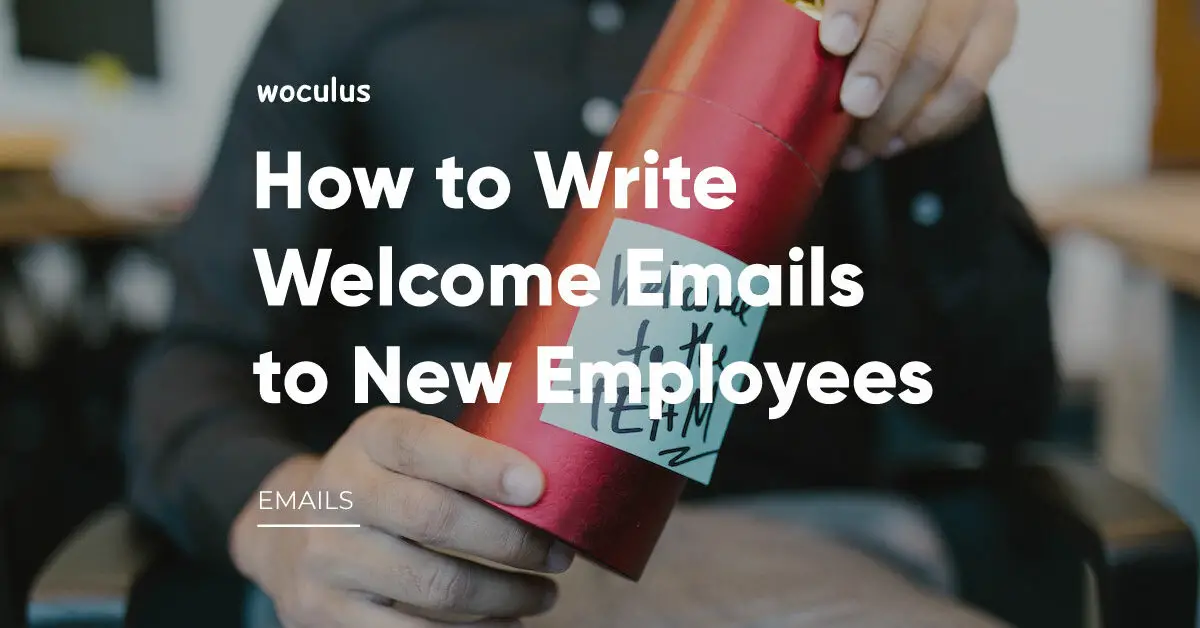It is common practice for companies to onboard new employees, which typically involves sending a welcome letter as one of the initial steps. The welcome emails to new employees is typically one of the first components of the onboarding process.
According to Zippia, companies with great onboarding experiences increase employee retention and productivity by 82% and 70%, respectively.
In this article, we will explain what a welcome letter to a new employee is, why they’re important, list all the steps on how to write the perfect welcome email to a new employee and crown it off with some samples and templates to help you write your own welcome letter for new employees.
What Is a Welcome Letter to New Employee?
As the name implies, a welcome letter is sent to new hires to ease them into your company. When you sign up on a platform, you get an email that says, “Thank you for signing up; here’s everything you need to know to do everything you need to do.”
A welcome letter or email does the exact same thing. It provides the employee or individual with all the necessary information to hit the ground running. This letter may include who they’re to report to, their daily tasks, and any information they’d need to get started.
Here’s everything that should be included in a welcome letter or email:
7 Powerful Guide to Remote Team Onboarding Process
What Should Be Included in A Welcome Email to New Employees?
Welcome letters can be used for two major purposes: to simply welcome the employee and give them basic information about their role, or to provide them with links and documents they’d need to know or have when working in your company. Or in some rare cases, welcome letters can be used to fulfill both purposes.
Regardless of how you utilize a welcome letter, there are some non-negotiable items that must be included. They are:
- A welcome address: This goes without saying, but a welcome letter must serve its first intended purpose-to welcome.
- The welcomer’s name and position. It is advisable to include your name and position to make this process easier for the employee. If you will be working closely with the employee, it is also advisable to include this in the letter. To take it up a notch, if you’ve interacted with the employee during the hiring process, include this in your letter. Doing this will go the extra mile to ensure the onboarding process is smoother.
- Essential information the employee needs to know about their job. While some of the information here may be in the job offer letter, it also doesn’t hurt to reiterate them to ensure they stay top-of-mind.
On the other hand, if you’re going to include links to resources or documents, here are some of the most important documents to include in your welcome letter:
- Names and contact of immediate colleagues. You can include the name, job description, and contact information if your organization is not too big. If the organization is big, doing this may be more stressful than it’s worth. In this case, the best option would be to list the immediate colleagues.
- Breakdown of daily tasks. If possible, a breakdown of daily tasks could also be included in the welcome letter. Although this is usually left out until a meeting has been held with the employee.
- Links to all company onboarding resources. Does your company have a handbook, company guidelines, onboarding, and Bio-data forms? These are examples of documents that should also be included in the welcome letter.
4 Essentials For The Perfect Remote Onboarding Process
How to Write Welcome Letters or Welcome Emails
Like most professional letters, welcome letters also follow a set of guidelines. This section of the article will list how to write an effective welcome letter or welcome email.
- Understand Your Goals and Outline the Letter.
Before writing a welcome letter, you must understand the point you’re trying to convey. Is the welcome letter only welcoming the employee, or is it going further to provide them with the necessary onboarding documents? After answering this, the next step is to outline your letter. This simply lists the main ideas you intend to cover in your letter.
- Start Your Letter by Welcoming the Employee
Your letter should start by actually welcoming the employee to the team. Congratulate them and express your excitement about working with them.
- Introduce Yourself
Introducing yourself in your welcome email breaks the ice and helps the employee ease faster into their roles. Also, if you’ve interacted with the employee during the interview process, make sure to include this as well.
- Include all the necessary information
If your welcome letter isn’t heavy on the details, it’s okay to skip this part. But if your letter is intended to further the onboarding process, then this is the part where you include all the necessary links, and documents and explain what they are. Regarding this section of the letter, there’s no clear-cut path for you to follow. Companies have different onboarding processes and documents. So, you may need to tailor this section of your letter to better serve your company and its needs.
- Closing
This is the last stage of your welcome letter, and it is customary to close with your contact information and an invitation to your employee if they have any questions or would need further clarifications.
How To Introduce Yourself To A New Remote Team
Welcome Letter to New Employee Example
[Recipients Name] [Address line] [State, ZIP Code] Re: Welcome Letter Dear [New employee name], Welcome to [name of company]! We are beyond excited to welcome you to the team! Your extensive experience in [list skills and touch on experience] makes you the right fit for this position. We had a brief chat [include where you first interacted with the employee]. My name is [include your name] and I am your [your position and relationship to the new employee]. Kindly contact me if you have any questions or need help getting settled into your new position. As discussed in your appointment letter, your official start date is [start date] and you're expected to be in the office [include days and times they're expected to work]. To complete your documentation process, kindly meet the head HR for a list of all the required documents. We'd also like to have you meet the team if you're up for it. Do not hesitate to reach out to me if you have any inquiries or questions! I look forward to working with you. Sincerely, [Your name and position]
Welcome Letter to New Employee Sample One
Jim Blessed Morrison 18 Hail Street, Salad Street, New Jersey Re: Welcome Letter Dear Jim, Welcome to Woculus! We are beyond excited to welcome you to the team! Your extensive experience in research, SEO copywriting, content writing, and marketing skills make you the right fit for this position. We had a brief chat in the assessment stage of your interview. My name is Samuel Bennett, and I am the content marketing manager, which means you’ll be working closely with me to implement all our content strategies. Kindly reach out to me if you need any clarifications on your tasks. As discussed in your appointment letter, your official start date is June 15, and you're expected to be in the office Monday through Thursday, from 10 a.m. to 4 p.m. To complete your documentation process, kindly meet the head of HR for a list of all the required documents. We'd also like to have you meet the team if you're up for it. Do not hesitate to contact me if you have any inquiries or questions! Looking forward to working with you. Sincerely, Samuel Bennett Content Marketing Manager
Welcome Email to New Employees from HR
Dear [New Employee Name], On behalf of the entire team here at [Company Name], I want to extend a warm welcome to you! We are thrilled to have you join us and look forward to working with you. As a new member of our team, you are now an integral part of our company, and we are committed to ensuring that your experience with us is positive and rewarding. Our team is dedicated to helping you get settled in and providing you with the support and resources you need to succeed in your role. During your first few weeks, you will be introduced to your team members, learn about our company's culture, policies, and procedures. You will also receive information about our benefits package, training opportunities, and career development programs. We understand that starting a new job can be both exciting and challenging, but please know that you are not alone. Our HR team and your manager are available to answer any questions you may have, offer guidance, and provide support as you settle in. Once again, welcome to [Company Name]. We are delighted to have you as part of our team, and we look forward to working with you. Best regards, [Your Name] HR Team, [Company Name]
Welcome Email to New Employee from Manager
Dear [New Employee Name], I wanted to take a moment to extend a warm welcome to you on behalf of our entire team here at [Company Name]. We are excited to have you join us as a new member of our team. As your manager, I am looking forward to working with you and helping you to settle in. You will be joining a group of talented and dedicated professionals, and I am confident that you will make valuable contributions to our team. Please feel free to reach out to me at any time if you have questions or concerns. I am here to support you and ensure that you have the resources and guidance you need to succeed in your role. Once again, welcome to our team. We are looking forward to getting to know you and working together to achieve our goals. Best regards, [Your Name] [Your Position], [Company Name]
Conclusion
In conclusion, writing a warm and welcoming email to a new employee is a crucial step in the onboarding process. It sets the tone for their experience with the company and helps to establish a positive working relationship from the start. By following the tips outlined in this article, employers can create a memorable and meaningful welcome email that helps to ensure a successful onboarding process for their new employees.





